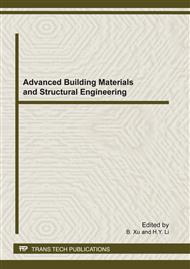p.232
p.237
p.241
p.246
p.250
p.255
p.259
p.265
p.272
Single-Primary-Winding Current-Fed Multiple-Input Full-Bridge Converter
Abstract:
This paper proposes the topological generated method, control method and circuit feature of the single primary winding current-fed full-bridge MIC. The MIC has only one primary winding. Compared with the traditional multiple primary winding current-fed MIC, it has simpler structure, more flexible control and can power the load simultaneously or individually. The Pulsating Current Source Cell in the converter is Boost type. The input current is continuous and it can prolong the usage age of PV cell and fuel cell. The single primary winding current-fed double-input full-bridge converter based on Boost converter is taken as an example to analyze its operation principle, control strategy. Simulation results are presented to verify the theoretical analysis
Info:
Periodical:
Pages:
250-254
Citation:
Online since:
February 2012
Authors:
Price:
Сopyright:
© 2012 Trans Tech Publications Ltd. All Rights Reserved
Share:
Citation:


